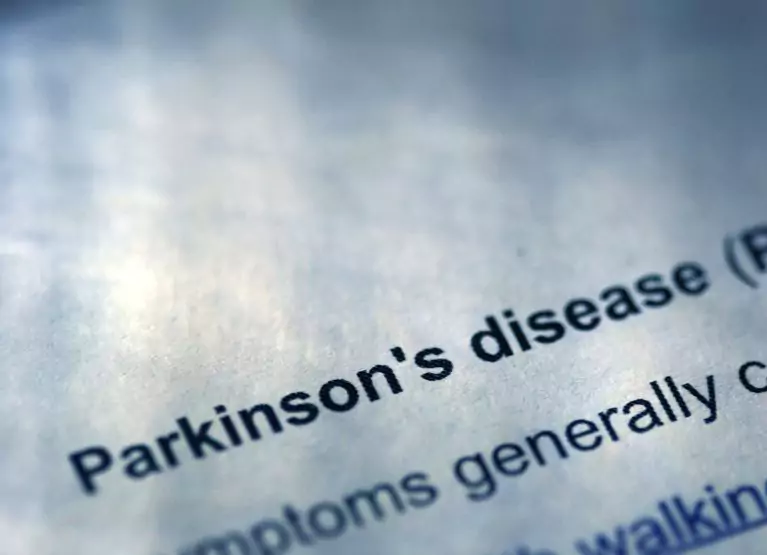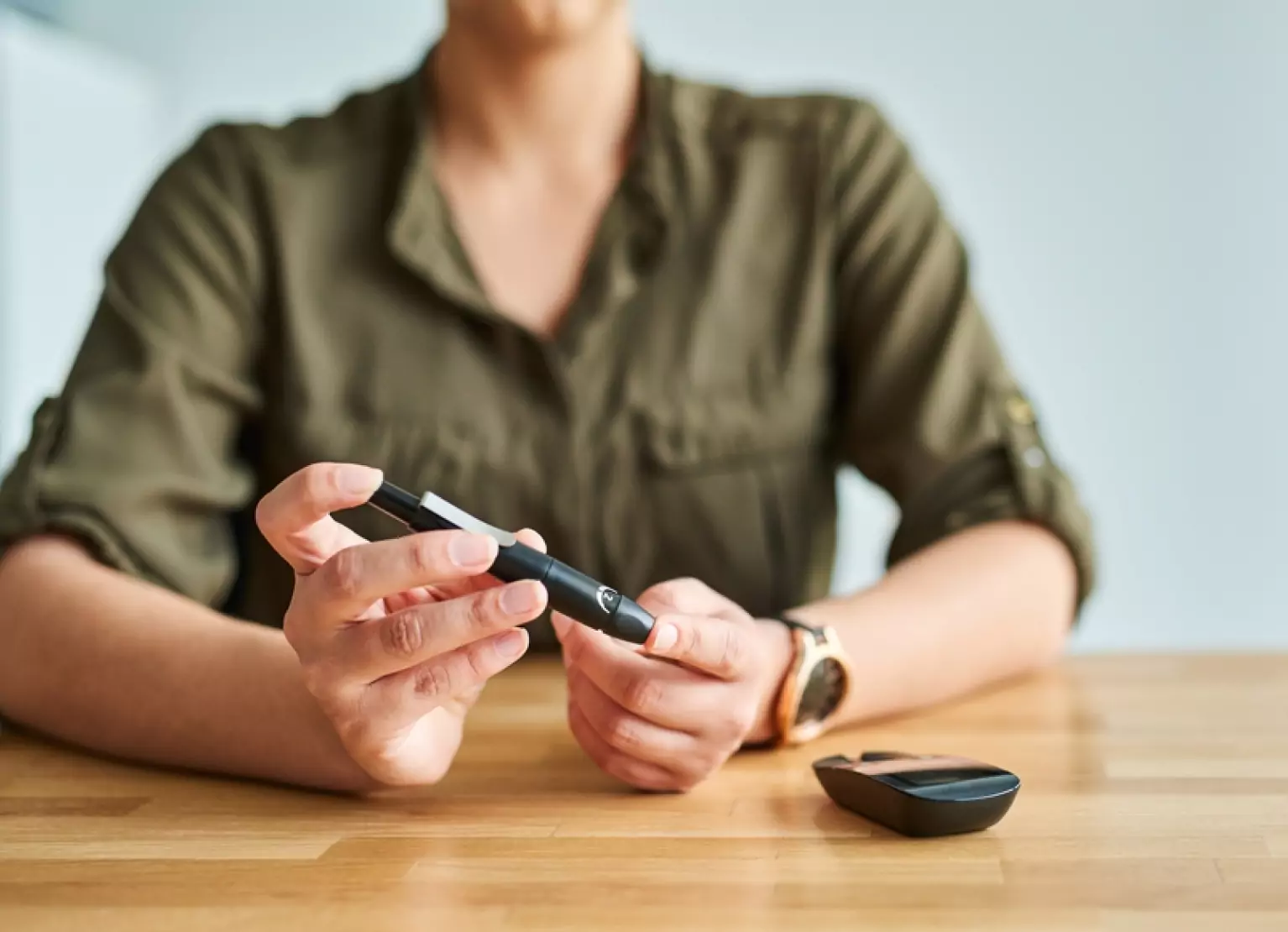Living with Autoimmune Conditions: Parkinson’s Disease

Key Takeways
The human body has an intricate immune system designed to protect the body from harmful agents like bacteria and viruses. Unfortunately, certain conditions can cause the immune system to attack its own body tissues, which leads to autoimmune disorders.
About eighty autoimmune diseases have been identified in humans to date, typically divided into “organ-specific” disorders and “non-organ-specific” disorders, which affect multiple parts of the body.
Parkinson’s disease, which affects nearly one million Americans and 10 million people worldwide, is typically classified as a brain disorder, though new research suggests autoimmunity may play a role in the development of the disease. Though more research is still needed, many studies have begun classifying Parkinson’s as an autoimmune disease.
So what exactly is Parkinson’s disease, what causes it, and what treatment options are available, if any? Let’s take a closer look at this condition and explore whether it can affect things like blood sugar levels.
What is Parkinson’s Disease?

Parkinson’s disease is a neurodegenerative disorder in which a person’s motor features become damaged, causing mobility issues, resting trembling, muscle rigidity, and reduced muscle control. This movement disorder appears when the nerve cells stop producing dopamine, a neurotransmitter used by the nervous system to send messages to the part of the brain that controls movement and coordination. Some experts believe the condition can develop due to problems in how the body uses a protein called alpha-synuclein. Parkinson’s disease is also sometimes attributed to the damage to the nerve cells that produce another important chemical substance called norepinephrine, which is involved in blood circulation. Some specific proteins become damaged in time, and they start forming clumps that build up in the brain cells that produce dopamine, leading to cell death and causing a slow cognitive decline. You cannot bring cells back to life, so an early diagnosis of the disease can prevent cell damage and other complications.
Unfortunately, once Parkinson’s disease takes effect, there is no cure for reversing the degeneration of neurons. While some studies consider genetics a cause of Parkinson’s, others speculate that it can occur due to prolonged exposure to environmental factors. However, we still need more research on this topic.
Parkinson’s is generally more prevalent among men. Of course, the disease affects quality of life and is challenging to deal with for those who have it. But it also affects families and caregivers because patients may become dependent on the people around them as their disease progresses.
What are the Symptoms of Parkinson’s Disease?

Imagine what it would feel like if you couldn’t hold a fork, a glass of water, or a pen anymore due to extreme trembling. The first stages of Parkinson’s are easily recognizable, beginning with slight tremors on one side of the body, a soft voice, a slow blink rate, loss of sense of smell, slow movements, and balance difficulties.
These are followed by subtle signs that affect daily living, such as a slight voice tremor, lip and jaw tremor, fixed facial expressions, and even tongue tremor, making it hard for the patients to speak properly. Usually, these symptoms appear when at least fifty percent of the neurons are lost, so the early stages of the disorder are harder to be recognized and have already begun affecting the patient’s quality of life.
Some of the most common Parkinson’s disease symptoms are:
- Resting tremors
- Muscle rigidity
- Bradykinesia (slowness of movement)
- Involuntary movements
- Cognitive changes
- Numbness
- Changes in blood pressure
- Speech changes
- Impaired posture
- Writing changes
- Balance problems
The late stages of the disease come with many health complications, such as gait freezing (when the feet are unable to walk) or even falling, dementia, delusions, or hallucinations. Patients in the last stage of Parkinson’s are also susceptible to pneumonia, which can be deadly.
How to Detect Parkinson’s Disease
Parkinson’s disease can be hard to detect as no specific tests are associated with its diagnosis, and risk factors are generally unknown. The most precise method currently used to diagnose this condition is the patient’s medical history and a neurological examination searching for clinical criteria of the disease.
Clinicians will review the patient’s history and analyze present symptoms to rule out other possible diagnoses. Genetic factors and family members who may have been previously affected by this condition can also make it easier to determine if the patient has a higher chance of developing Parkinson’s.
Blood Tests and Imaging
Blood tests and additional testing may help with diagnosis as they can identify elevated cholesterol levels and environmental toxins like carbon disulfide, herbicides, and pesticides present in the bloodstream.
If a patient shows symptoms consistent with Parkinson’s, their doctor may also order imaging tests such as MRI to search for neurological abnormalities and rule out other possible conditions. Head traumas, inflammation, and genetic mutations are also factors that can lead to the diagnosis of Parkinson’s disease.
How to Treat Parkinson’s

Treatment of Parkinson’s disease can vary as Parkinson’s currently does not have a known cure. The current treatment options available aim to slow the disease’s progression and improve the patient’s functional capacity for as long as possible.
Levodopa
Healthcare professionals often recommend levodopa, a naturally occurring amino acid first introduced in the 1960s, metabolized to dopamine in the brain.
Levodopa may help control the motor symptoms of Parkinson’s disease and is often used in combination with DOPA decarboxylase inhibitors that can increase its effectiveness over time.
While it is still considered the most effective option, long-term use can lead to different health complications such as motor fluctuations and dyskinesias.
Patients treated with levodopa can also experience side effects such as nausea and lightheadedness.
Dopamine Agonists
Dopaminergic medication is an excellent second treatment option, as it improves the dopamine levels in the body. Unlike levodopa, dopamine agonists mimic the effects of dopamine in the brain rather than converting it into the chemical themselves.
Side effects of dopamine agonists can include hallucinations, sleepiness, and compulsive out-of-character behaviors, so this treatment option might not be suitable for people who have experienced psychosis or depression.
Deep Brain Stimulation
Other treatment options can sometimes include deep brain stimulation, which functions through a device implanted in the brain to deliver electrical currents. Its effects are similar to those of levodopa and generally are effective for Parkinson’s patients as well as people who have epilepsy.
Supportive Therapy Options
Apart from medicinal treatment, other forms of therapy can help improve symptoms of Parkinson’s disease. Doing regular physical exercise can improve motor skills and muscle strength, slowing down the rigidity process.
Taking regular walks or engaging in dance therapy is especially recommended for patients with an early diagnosis. Speech therapy and voice treatment can also improve volume and diction.
Facts About Parkinson’s Disease

- Parkinson’s disease is the second most common neurodegenerative disease after Alzheimer’s.
- Apart from motor symptoms that affect individuals with Parkinson’s, non-motor symptoms include depression, constipation, genitourinary problems, and sleep problems.
- Drug-induced Parkinsonism is a condition that mimics the symptoms of Parkinson’s disease and is typically induced by antipsychotic medication. While Parkinson’s currently does not have a cure, symptoms of drug-induced parkinsonism subside within three months of cessation of treatment.
- Early-onset Parkinson’s, or when symptoms set in before age 50, affects about four percent of Americans diagnosed with the condition and has been linked to specific genes in the individual, making it more likely to develop.
- Parkinson’s symptoms can sometimes be confused with Essential Tremor (ET), which causes uncontrollable shaking. ET is eighty times more common than Parkinson’s, and though some scientists believe it to be linked to the future development of Parkinson’s, more studies are still required.
The Connection Between Blood Sugar Levels and Parkinson’s Disease

High blood sugar levels can lead to type 2 diabetes, a chronic illness in which the body becomes resistant to insulin. Insulin is a vital hormone responsible for transporting glucose from the blood to the cells to provide energy to the body. If the body becomes resistant to insulin, glucose stays in the blood for a longer time, causing many health complications.
Parkinson’s disease and type 2 diabetes have been found to share many common pathophysiological mechanisms.
New research suggests a possible link between nerve cell degeneration, which can lead to diabetes, and Parkinson’s disease. Insulin resistance is present in both individuals with diabetes and those with Parkinson’s, so improving our blood glucose levels by reducing the glucose intake may help reduce the risks of both diseases.
Diet Guidelines for Parkinson’s Disease

Eating a healthy and nutritious diet is one of the best habits you can introduce into your lifestyle to prevent disease. The Parkinson’s Foundation recommends a balanced diet full of whole grains, fruits and vegetables, dairy, and protein-rich foods to stay on top of your health and get plenty of exercise. However, everyone is different, and it’s important to test your body’s unique response.
For individuals already diagnosed with Parkinson’s, professionals recommend staying hydrated, limiting sugar and caffeine intake, and increasing fiber intake to aid digestion.
Some studies have also found evidence supporting the use of omega-3, probiotics, and vitamin B and vitamin D supplements to aid in managing this condition.
When considering supplementation, always talk with a credentialed health provider, however a good place to start is by boosting your vitamins and minerals through food. Try adding fatty fish to your diet to boost omega-3, eating yogurt or fermented foods for extra probiotics, and things like good quality animal proteins, leafy greens, and eggs for sources of vitamin B.
Find the right Nutrisense programto turn insight into progress.
Go Beyond Glucose Data with Nutrisense
Your glucose can significantly impact how your body feels and functions. That’s why stable levels are an important factor in supporting overall wellbeing. But viewing glucose isn't enough. Nutrisense, you’ll be able to learn how to use your body's data to make informed lifestyle choices that support healthy living.
One-to-one coaching
Sign up to access insurance-covered video calls to work with a glucose expert: a personal registered dietitian or certified nutritionist who will help tailor your lifestyle and diet to your goals.
Monitor and measure what matters
With the Nutrisense CGM Program, you can monitor your glucose with health tech like glucose biosensors and continuous glucose monitor (CGM)s, and analyze the trends over time with the Nutrisense App. This will help you make the most informed choices about the foods you consume and their impact on your health.
Find your best fit
Ready to take the first step? Start with our quiz to find the right Nutrisense program to help you take control.

Carlee's training at Western Illinois University and an internship at the Memphis VA Hospital lead her to a career in outpatient counseling and bariatric nutrition therapy. In these positions, Carlee realized many of the disease states (upwards of 80%!) her patients experienced were actually preventable. She knew she had to dig deeper into preventative health and has since been passionate about helping people translate this complex glucose data into actionable changes anyone can implement into their everyday lives.


.webp)

